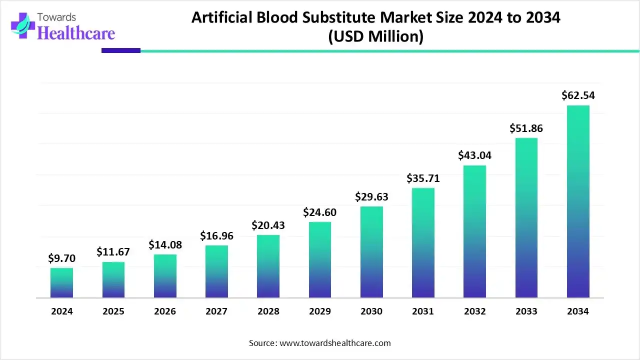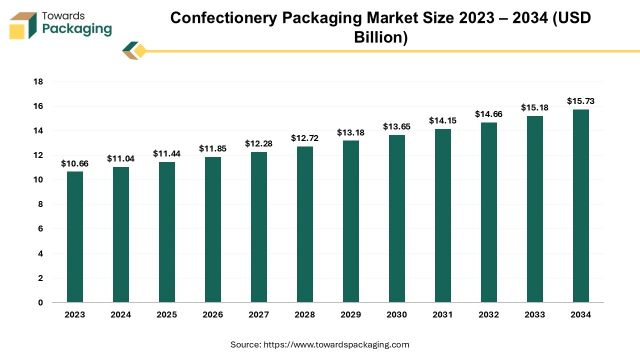The market currently experiences aggressive expansion as geopolitical tensions drive demand for flexible energy infrastructure. Operators are rapidly sanctioning large-scale floating export projects while simultaneously securing long-term charters for regasification assets to ensure immediate supply stability.
Chicago, Nov. 24, 2025 (GLOBE NEWSWIRE) — The global gloating Liquefied Natural Gas terminals market was valued at US$ 25.76 billion in 2024 and is expected to reach US$ 60.25 billion by 2033, growing at a CAGR of 9.9% during the forecast period 2025–2033.
The Floating Liquefied Natural Gas (FLNG) terminals market witnessed a pivotal shift as North American operators sanctioned massive infrastructure. Specifically, Cedar LNG secured its Final Investment Decision in June 2024 with a nameplate capacity of 3.3 million tons per annum (MTPA). Following this approval, stakeholders valued the total estimated capital expenditure at USD 4 billion. Consequently, operations will commence in late 2028. To ensure revenue stability, the facility locked in 20-year take-or-pay liquefaction tolling service agreements. Within these deals, ARC Resources committed to 1.5 MTPA of the volume while Pembina Pipeline also secured 1.5 MTPA.
Request Sample Pages: https://www.astuteanalytica.com/request-sample/floating-liquefied-natural-gas-terminals-market
Regulators boosted the sector further when Delfin LNG received the first U.S. deepwater port license in March 2025. Subsequently, permitting documents authorized a total capacity of 13.3 MTPA across all phases. To support this expansion, developers awarded Siemens Energy a contract in July 2025 to supply 4 gas turbine packages for the initial vessel. Ultimately, these milestones confirm that the Floating Liquefied Natural Gas (FLNG) terminals market is rapidly maturing in the region.
Key Findings in Floating Liquefied Natural Gas (FLANG) Terminals Market
| Market Forecast (2034) | US$ 60.25 billion |
| CAGR | 9.9% |
| Largest Region (2025) | North America (44.37%) |
| By Terminal Type / Asset | Floating Storage And Regasification Units (FSRUS) (55.06%) |
| By Contract Type/ Business Model | Lease / Hire Contracts (48.29%) |
| By Application/End-Use | LNG Export Terminals (49%) |
| By Capacity /Module Size | Large-Scale (> 1,000,000 Tpa) (60.0%) |
| Top Drivers |
|
| Top Trends |
|
| Top Challenges |
|
Republic of the Congo Rapidly Expands Operational Floating Export Capacity
West Africa has emerged as a speed-to-market leader within the Floating Liquefied Natural Gas (FLNG) terminals market. Notably, Tango FLNG began introducing gas in February 2024 with a liquefaction capacity of 0.6 MTPA. Concurrently, the vessel operates while moored alongside the Excalibur Floating Storage Unit. By August 2025, the project had successfully delivered 12 LNG cargoes to international buyers. Financially, Eni utilized a USD 78 million negative price correction clause in the sale agreement. Moreover, operators structured a performance bonus of USD 44 million for exceeding targets.
Future growth remains aggressive as the second unit named FLNG Nguya boasts a design capacity of 2.4 MTPA. Accordingly, construction schedules target a startup by the end of 2025. Eventually, these combined assets will elevate the Congo’s production to 3.0 MTPA. Such rapid deployment highlights the flexibility inherent in the Floating Liquefied Natural Gas (FLNG) terminals market.
Mozambique Doubles Offshore Capacity To Monetize Vast Rovuma Reserves
East Africa continues to attract heavy investment for offshore monetization strategies. For instance, Coral North FLNG reached its Final Investment Decision on October 2, 2025. Developers value the project investment at approximately USD 7.2 billion. Technically, engineers designed the unit for a production capacity of 3.5 MTPA. As a result, such expansion raises Mozambique’s total LNG output capacity to over 7 MTPA. The Floating Liquefied Natural Gas (FLNG) terminals market thrives here due to stranded gas economics.
Economic projections indicate the project will generate USD 23 billion in government revenue over its lifetime. Additionally, development activities will create 1,400 direct and inrect jobs for the local workforce. Finally, planners target production startup for 2028. These metrics reinforce the long-term viability of the market in the region.
Nigeria Shifts To Indigenous Offshore Processing With Significant Capital Commitment
Local operators are claiming a larger share of the energy value chain. Precisely, UTM Offshore received its License to Construct in September 2024. Following review, regulators upgraded the facility’s approved capacity to 2.8 MTPA. Operationally, the plant will process 324 million standard cubic feet per day of natural gas. Furthermore, engineers designed the unit to produce 500,000 tons of LPG annually for domestic use. The Floating Liquefied Natural Gas (FLNG) terminals market facilitates such localized energy solutions.
Capital requirements for the initiative are substantial with an estimated project cost of USD 5 billion. Eventually, commissioning activities are scheduled for 2028. Logistically, the Yoho field reservoir provides the necessary feedgas and sits 60 kilometers offshore. These parameters demonstrate how the market unlocks marginal fields.
Midstream Operators Record Maximum Utilization And Favorable Commercial Contract Resets
Existing assets in the Floating Liquefied Natural Gas (FLNG) terminals market are performing at peak efficiency. Impressively, Hilli Episeyo achieved 100% commercial uptime in Q3 2024. Consequently, the vessel generated USD 73 million in Distributable Adjusted EBITDA in that single quarter. Strategically, management re-contracted Hilli for a 20-year term with Pan American Energy in Argentina during 2024. Such long-term commitments signal robust demand for operational floating assets.
Commercial structures are also evolving to favor asset owners. For example, Gimi FLNG underwent a commercial contract reset with BP in August 2024. Resulting from negotiations, Golar is entitled to USD 220 million in pre-COD compensation across 2024 and 2025. Specifically, daily payments were retroactively applied from January 10, 2024. To support this growth, Golar issued a USD 300 million senior unsecured bond in late 2024.
New Construction Benchmarks Establish Competitive Pricing For Future Liquefaction Capacity
Investors in the Floating Liquefied Natural Gas (FLNG) terminals market are funding new capacity to meet future energy needs. Accordingly, Golar ordered the Mark II FLNG in September 2024. Contractually, the Engineering, Procurement, and Construction contract is valued at USD 1.6 billion. Overall, the total budget for the conversion stands at USD 2.2 billion. Strikingly, these figures imply a highly competitive delivery cost of approximately USD 600 per tonne of liquefaction capacity. Efficient capital allocation is driving the Floating Liquefied Natural Gas (FLNG) terminals market forward.
Technical specifications for the Mark II vessel list a capacity of 3.5 MTPA. Later, delivery is confirmed for Q4 2027. Significantly, the single order increases Golar’s controlled liquefaction capacity by 70%. Such aggressive expansion proves that the market is entering a new growth phase.
Modular Jack Up Designs Deliver Production Rates Exceeding Nameplate Capacity
Innovation is reshaping deployment timelines in the Floating Liquefied Natural Gas (FLNG) terminals market. Notably, the Altamira Fast LNG unit exported its first full cargo in October 2024. Currently, the unit operates with a nameplate capacity of 1.4 MTPA. Surprisingly, operational data from early 2025 showed production rates reaching 1.67 MTPA. Mechanically, the facility utilizes 3 repurposed jack-up rigs to achieve these volumes.
Regulatory approvals support sustained export activities. Furthermore, NFE secured a permit to export up to 7.8 million metric tons through 2028. Simultaneously, construction of the second unit targets completion in Q1 2026. Logistically, the Energos Princess carrier transported the inaugural load with a capacity of 138,000 cubic meters. These metrics validate the modular approach within the Floating Liquefied Natural Gas (FLNG) terminals market.
Need a Customized Version? Request It Now: https://www.astuteanalytica.com/ask-for-customization/floating-liquefied-natural-gas-terminals-market
Asian Shipyards Secure Record Backlogs Driven By Floating Infrastructure Demand
Manufacturing centers are seeing unprecedented demand for marine energy assets. Quantitatively, Seatrium’s net order book stood at SGD 24.4 billion as of September 2024. Earlier, the yard delivered the Brassavola LNG bunker vessel in early 2024 to support the marine ecosystem. Impressively, the company secured SGD 15.2 billion in new orders during FY2024. Financially, Seatrium’s leverage ratio improved to 1.1x by year-end 2024. Financial health in supply chains bolsters the Floating Liquefied Natural Gas (FLNG) terminals market.
South Korean yards are also critical to project timelines. Specifically, Samsung Heavy Industries is constructing the hull for the Cedar LNG project with delivery targeted for 2028. Additionally, SHI secured the Early Works program for Delfin’s first vessel in July 2025. Such shipyard capacity is essential for the expanding market.
Regulatory Frameworks And Green Technology Define Future Project Specifications
Sustainability and upstream integration are now primary drivers. For instance, Petronas ZFLNG is designed for a capacity of 2.0 MTPA with operations scheduled for 2027. Geographically, the facility sits in the Sipitang Oil and Gas Industrial Park. Meanwhile, Mozambique’s Area 4 recoverable gas is estimated at 85 trillion cubic feet to support the Coral units. These vast reserves underpin long-term confidence in the Floating Liquefied Natural Gas (FLNG) terminals market.
Environmental compliance is dictating design choices. Notably, Cedar LNG is designed to be 100% electric-driven using the BC Hydro renewable grid. Uniquely, the Haisla Nation owns a 50.1% majority stake in that venture. Legally, the U.S. Department of Energy authorized NFE to export to non-FTA countries for a term of 5 years. Finally, Delfin’s extension allows for onshore facility construction until September 2027. Strict adherence to these mandates is crucial for the Floating Liquefied Natural Gas (FLNG) terminals market.
Floating Liquefied Natural Gas Terminals Market Major Players:
- BP
- BW Offshore
- Chevron
- Delfin Midstream
- ENH Mozambique
- Eni SpA
- ExxonMobil
- Golar LNG
- Hoegh LNG
- Hyundai Heavy Industries
- JGC Corporation
- Karoon Energy
- KBR
- Mitsui OSK Lines
- MODEC
- New Fortress Energy
- Petronas
- Samsung Heavy Industries
- SBM Offshore
- Shell
- Technip Energies
- TotalEnergies
- Other Prominent Players
Key Market Segmentation:
By Terminal Type/Asset
- Floating LNG Production Vessels (FLNG)
- Floating Storage and Regasification Units (FSRUs)
- Floating LNG Liquefaction Platforms (offshore fixed or turret-moored)
By Application / End Use
- LNG Export Terminals
- LNG Import Terminals
- Regasification for Marine/Bunkering
- Offshore Gas Field Monetization
By Contract Type/Business Model
- Build-Own-Operate (BOO)
- Lease / Hire (Time Charter / Charter-Out)
- Joint Venture / Public-Private Partnership (PPP)
By Capacity / Module Size
- Small-scale (<500,000 tpa)
- Mid-scale (500,000-1,000,000 tpa)
- Large-scale (>1,000,000 tpa)
By Region
- North America
- Europe
- Asia Pacific
- Middle East and Africa
- South America
Need a Detailed Walkthrough of the Report? Request a Live Session: https://www.astuteanalytica.com/report-walkthrough/floating-liquefied-natural-gas-terminals-market
About Astute Analytica
Astute Analytica is a global market research and advisory firm providing data-driven insights across industries such as technology, healthcare, chemicals, semiconductors, FMCG, and more. We publish multiple reports daily, equipping businesses with the intelligence they need to navigate market trends, emerging opportunities, competitive landscapes, and technological advancements.
With a team of experienced business analysts, economists, and industry experts, we deliver accurate, in-depth, and actionable research tailored to meet the strategic needs of our clients. At Astute Analytica, our clients come first, and we are committed to delivering cost-effective, high-value research solutions that drive success in an evolving marketplace.
Contact Us:
Astute Analytica
Phone: +1-888 429 6757 (US Toll Free); +91-0120- 4483891 (Rest of the World)
For Sales Enquiries: sales@astuteanalytica.com
Website: https://www.astuteanalytica.com/
Follow us on: LinkedIn | Twitter | YouTube
CONTACT: Contact Us: Astute Analytica Phone: +1-888 429 6757 (US Toll Free); +91-0120- 4483891 (Rest of the World) For Sales Enquiries: sales@astuteanalytica.com Website: https://www.astuteanalytica.com/

Disclaimer: The above press release comes to you under an arrangement with GlobeNewswire. IndiaShorts takes no editorial responsibility for the same.




